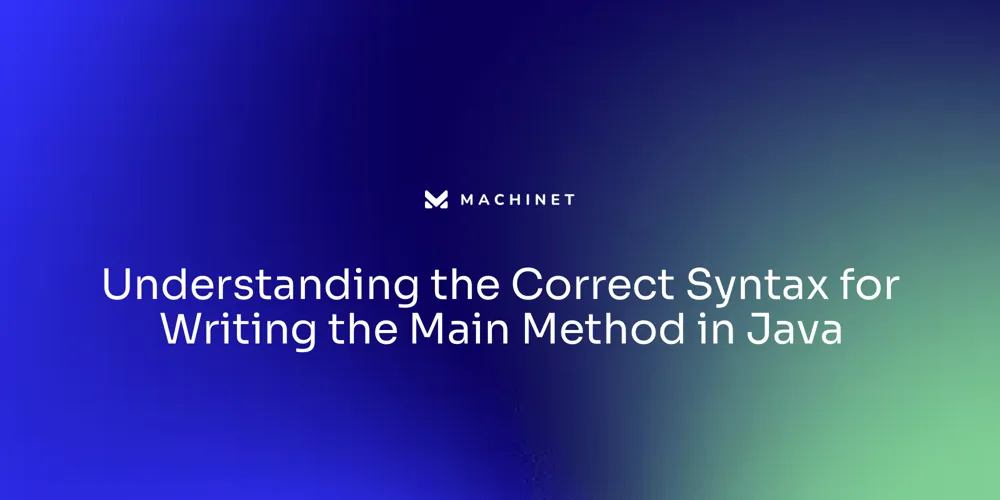
Introduction
In the ever-evolving landscape of software development, ensuring the robustness and reliability of applications is paramount. Mutation testing emerges as a potent technique aimed at bolstering the quality of test suites by introducing deliberate changes, or "mutations," to the source code. This process scrutinizes whether the existing test cases can detect these small, intentional defects, thereby uncovering weaknesses and gaps in test coverage.
Research has shown that the ability of test suites to catch these mutations often correlates with their effectiveness in identifying real-world bugs. Given the staggering costs associated with defective software, which surpassed $2 trillion in the U.S. alone in 2022, the role of robust testing methodologies like mutation testing cannot be overstated. This article delves into the intricacies of mutation testing, exploring its various types, benefits, challenges, and best practices, along with an overview of the tools that facilitate this essential testing technique.
What is Mutation Testing?
Mutation evaluation is a software evaluation method that introduces small, intentional alterations to a program's source code, known as mutations, to assess the robustness of existing case scenarios. This procedure assesses whether the evaluation suite can identify these artificial flaws, thereby emphasizing any shortcomings in the assessment cases. The concept, supported by research from Allen School professors René Just and Michael Ernst, has demonstrated that mutants can act as effective substitutes for real defects. 'Their influential work in 2014 showed that a suite's ability to detect mutants often correlates with its effectiveness in identifying actual bugs, providing significant insights for improving quality.'. As stated by the Consortium for Information & Software Quality (CISQ), faulty applications expenses exceeded $2 trillion in the U.S. alone in 2022, highlighting the significance of strong evaluation methods. Mutation evaluation, consequently, plays an essential part in improving program quality by pinpointing deficiencies in coverage and proposing areas for enhancement.

Types of Mutation Testing
Mutation testing can be classified into three major categories, each offering unique insights into software quality:
-
Classical Mutation Testing: This method involves straightforward modifications to the code, such as altering arithmetic operators or changing conditional statements. By implementing these straightforward alterations, it assesses the durability of the scenarios against frequent coding errors.
-
Higher-Order Mutation Testing: This advanced approach introduces more complex changes that affect multiple parts of the code. The aim is to provide a deeper analysis of test effectiveness by simulating intricate and less obvious errors, thus challenging the robustness of the test suite on a broader scale.
-
Selective Mutation Testing: Focusing on efficiency, this variant applies only a subset of possible mutations. The chosen alterations are those deemed most likely to provide valuable insights into the software’s reliability. By focusing on particular areas, it aids in recognizing essential vulnerabilities without overloading the evaluation process with excessive alterations.
In practice, tools such as Mutahunter have surfaced to improve variant examination. This open-source tool utilizes large language models (LLMs) to verify the robustness of evaluation cases. In contrast to conventional line coverage metrics, which merely show the degree of code execution, Mutahunter incorporates intentional alterations to the code to determine if the examination cases can identify them. This approach guarantees that examination scenarios are not merely surface-level but able to detect possible issues, thereby greatly enhancing the quality of the application.
Additionally, the incorporation of AI and continuous delivery (CD) pipelines into the alteration evaluation process is influencing the future of application assessment. These advancements enable ongoing enhancement and adjustment of assessment strategies, ensuring that software quality is upheld throughout the development lifecycle. By consistently reviewing alteration assessment documents and addressing deficiencies in the evaluation suite, developers can improve their evaluations, thus strengthening the overall durability of their applications.
Benefits of Mutation Testing
Mutation testing offers several significant benefits:
-
Improved Test Quality: By revealing gaps in test coverage, mutation testing leads to the development of more effective test cases. This technique is similar to analyzing requirements and examination cases composed in natural language using NLP (Natural Language Processing) to ensure alignment and completeness, thereby enhancing overall coverage. AI-driven evaluation tools automate repetitive tasks and enhance execution efficiency, which further strengthens quality.
-
Enhanced Code Reliability: Mutation evaluation ensures that the code behaves as expected under various conditions, thereby increasing overall software reliability. This is similar to identifying potential defects and vulnerabilities through defect prediction and analysis, which uses historical data and usage patterns to predict issues before they manifest. By automating these processes, AI-based tools reduce the incidence of post-release failures, ensuring higher reliability.
-
Identification of Redundant Evaluations: Developers can pinpoint assessments that do not contribute to detecting faults, allowing for better resource allocation. This reflects the use of AI in visual evaluation, where computer vision techniques compare visual aspects of the application across different environments to identify inconsistencies. By identifying and removing unnecessary tests, resources can be reallocated to more critical areas, thus enhancing overall examination efficiency and effectiveness.

Challenges and Limitations of Mutation Testing
Despite its advantages, mutation testing presents certain challenges:
-
Performance Overhead: The process can be computationally intensive, potentially leading to longer testing cycles. As per the Consortium for Information & Software Quality (CISQ), the expenses linked to faulty software exceeded $2 trillion in 2022 in the United States alone, emphasizing the necessity for effective evaluation tools.
-
Complex Change Operators: Comprehending and applying different alteration operators may necessitate advanced expertise and can complicate the evaluation process. As a study presented by René Just and Michael Ernst shows, producing mutant implementations requires care. If there are too many or they are too obscure, developers may spend a lot of time on unproductive tasks, leading to frustration.
'- False Positives: Occasionally, mutation assessment may suggest that evaluations are ineffective even when they are not, leading to unnecessary revisions.'. 'This can be alleviated by concentrating on a limited number of mutants that relate to frequent problem misunderstandings, as indicated by studies examining student assessments that do not succeed in a correct implementation.'. When executed properly, this method leads to improved comprehension and more efficient assessment suites.
Mutation Testing Tools
Several tools facilitate mutation testing, each with unique features tailored to different programming languages and testing needs:
-
PIT: A widely-used mutation testing tool for Java that integrates seamlessly with popular build systems like Maven and Gradle. PIT excels in identifying weak spots in your assessment suite and is particularly effective for enterprise-level applications.
-
MutPy: This Python-based tool provides an intuitive interface and supports various alteration strategies. It’s designed to help you uncover deficiencies in your Python examination cases by introducing deliberate changes, or “mutants,” into your code.
'- Stryker: A robust tool for assessing JavaScript that assists developers in identifying flaws in their unit evaluations.'. Stryker supports various JavaScript frameworks and offers comprehensive reports to assist you in enhancing your coverage.
- Mutahunter: An innovative, open-source tool utilizing large language models (LLMs) for variant evaluation. 'Created to tackle the challenge of confirming case strength, Mutahunter improves conventional variant evaluation by generating alterations that align with frequent problem misunderstandings, simplifying the process for developers to recognize and resolve deficiencies in their assessment packages.
Calculating Mutation Score
The alteration score is a crucial measure in alteration evaluation, acting as a dependable indicator of a verification suite's efficiency. It is calculated by dividing the number of detected mutants by the total number of mutants generated. An elevated alteration score signifies a more efficient examination collection, indicating that the evaluations are strong enough to detect subtle flaws introduced through mutant changes. This metric not only assists developers in evaluating the quality of their evaluations but also directs enhancements in coverage. Consequently, code modification evaluation promotes a deeper comprehension of code behavior and guarantees that software adheres to elevated standards of quality and reliability.

Best Practices for Implementing Mutation Testing
To maximize the effectiveness of mutation testing, consider the following best practices:
-
Integrate with CI/CD: Incorporate mutation testing into continuous integration and continuous deployment pipelines to ensure regular assessment of test quality. This integration enables automated evaluations on every code change, leading to faster development cycles and quicker identification of issues.
-
Selective Change: Use selective change to concentrate on essential areas of the codebase, thereby reducing performance impacts while still gaining valuable insights. Targeted alteration aids in preserving the equilibrium between comprehensive evaluation and system efficiency.
-
Iterate and Improve: Regularly review and refine case scenarios based on mutation testing results to foster an iterative enhancement process for code quality. Iteration ensures that your test suite evolves and adapts to new changes, increasing its effectiveness over time. By continuously addressing surviving mutants, you enhance the robustness of your software, ultimately reducing defect density and improving overall quality.

Conclusion
Mutation testing stands out as a vital technique in the realm of software development, enhancing the quality and reliability of applications. By intentionally introducing small changes to the source code, it effectively evaluates the robustness of existing test cases, revealing critical gaps in test coverage. Research indicates a strong correlation between a test suite's ability to detect these mutations and its efficiency in identifying real-world bugs, making mutation testing an essential practice in mitigating the staggering costs associated with defective software.
The various types of mutation testing—Classical, Higher-Order, and Selective—each offer distinct benefits and insights into software quality. Tools like Mutahunter and Stryker leverage advanced methodologies to optimize the mutation testing process, ensuring that test cases are not only comprehensive but also capable of catching potential bugs. Despite its advantages, mutation testing does face challenges such as performance overhead and the potential for false positives, necessitating a careful approach to implementation.
To maximize the benefits of mutation testing, integrating it into CI/CD pipelines and focusing on selective mutation strategies are recommended best practices. Regularly iterating and refining test cases based on mutation testing results fosters continuous improvement, ultimately leading to more robust applications. By prioritizing thorough testing methodologies like mutation testing, developers can significantly enhance software quality, ensuring that applications meet high standards of reliability and performance.
AI agent for developers
Boost your productivity with Mate. Easily connect your project, generate code, and debug smarter - all powered by AI.
Do you want to solve problems like this faster? Download Mate for free now.




